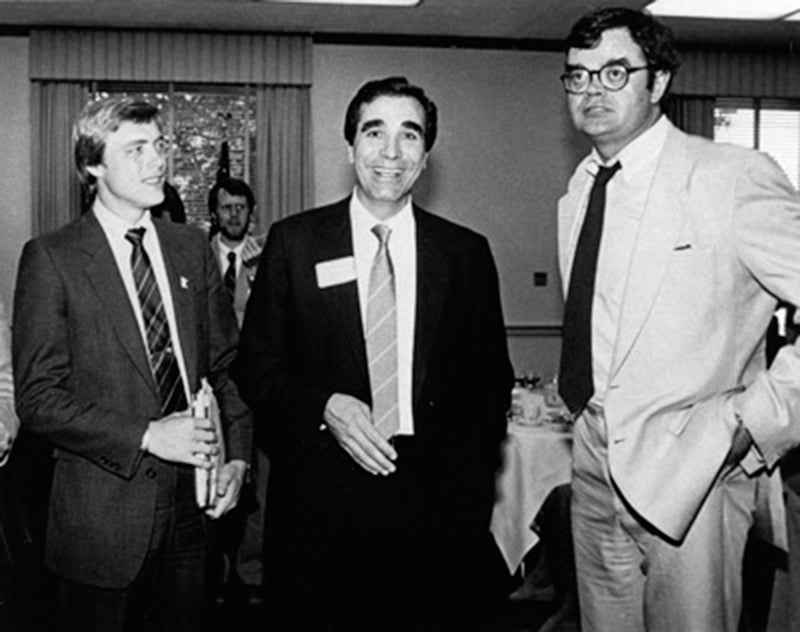Guest Column: Things aren’t dark for Greater Minnesota
Published 9:16 am Tuesday, June 28, 2016

Tim Penny, the late Bruce Vento, and Garrison Keillor in Washington, D.C., while Penny was in Congress. -Provided
Guest Column by Tim Penny
Tim Penny is the president and CEO of Southern Minnesota Initiative Foundation.
Friday will be Garrison Keillor’s last official time hosting “A Prairie Home Companion,” a public radio broadcast with a history a decade longer than that of Southern Minnesota Initiative Foundation’s, which is celebrating its 30th anniversary this year. There’s no denying Keillor’s radio show, particularly his “News from Lake Wobegon” monologue, has crafted one of the most pervasive narratives for rural Minnesota and our small, Midwest towns.
For those of us living in and working for the future of that mythical — yet somehow incredibly real — “Lake Wobegon,” we understand that Keillor’s sign-off from a place where “all the women are strong, the men good-looking, and the children are above average” is a somewhat misleading simplification. Through SMIF’s early childhood programming, we understand that all of our children are not above average, but instead struggle due to income and racial achievement disparities. In our rural region, we are home to many new immigrant families who can feel isolated by our business-as-usual approach, no matter how much “Minnesota nice” envelopes it. And, as evidenced by the photo of me with Keillor above, I’ll just say not all the men are necessarily good-looking.
Yet, one of the things the more than 1,500 Lake Wobegon tales have done is create a rural voice pumped weekly into the radios of rural and urban dwellers alike. Keillor’s stories are highly edited, nostalgia-inducing yarns filled with a somewhat realistic, yet limited cast of characters. The question may now become: with the departure of Keillor and his monologue, how else can we carry the rural narrative forward?
Keillor’s show has created a nostalgic connection point for those of us who reside in rural areas and for those with rural roots, but those roots are weakening with generational change. The stage is set for a new voice — even better, new voices — to step up to the mike, or blog, or podcast, or camera lens or whatever medium they may find to help tell our rural stories.
Perception becomes reality, William James observed. If that’s indeed the case, the stories we tell ourselves and others are important. In Minnesota, while 40 percent of the population still lives in Greater Minnesota, our representation in mainstream media does not seem to reflect that proportion. Additionally, we face researchers who have been predicting the doom-and-gloom of rural Minnesota for decades, locals who pessimistically eye empty main streets and yearn for the better days of yore and outsiders who pass through and often pass judgement of these “dying” places.
However, I argue that there’s a new vitality in many of our rural communities and that we need to be the ones telling that story. Certainly, researchers like Ben Winchester and others at the University of Minnesota’s Extension are providing evidence that things are not as dark for Greater Minnesota as people may tend to believe. But beyond statistics of new blood coming back into rural areas, especially in our 20-county region, there is a lot to celebrate: enviable quality of life, beautiful landscapes, a world-class medical facility, many new businesses, quality schools and generous, dedicated residents.
In addition, there is a spirit of entrepreneurialism that lives on in our small towns. At SMIF, we see it as our job to help spark that spirit and give seed investments to help them grow. As with everything we do, this needs to be a collaborative, regional effort. A growing tourism industry in Fillmore County must be seen as a success for surrounding counties; a theater project in Le Sueur must be celebrated by any town within an easy drive.
Most importantly, we should all be vigorous advocates of our region and more hopeful in our thinking of what can be. With Keillor stepping aside, we must be the ones to reclaim our own narrative. We must become the story tellers offering a more complete, more hopeful telling of what is and where we’re headed.
I welcome your comments and questions. You can reach me at timp@smifoundation.org or 507-455-3215.


